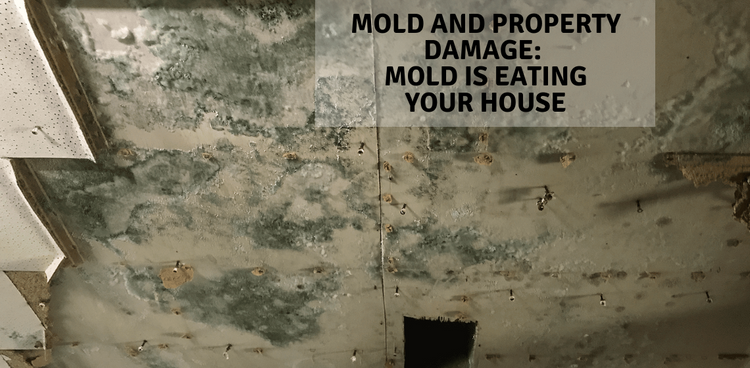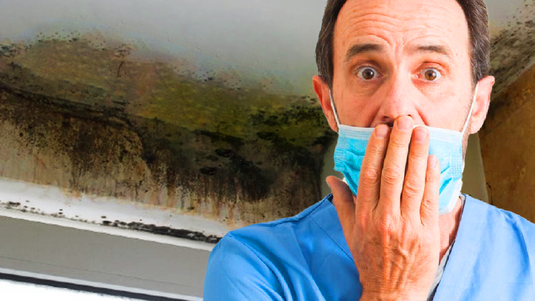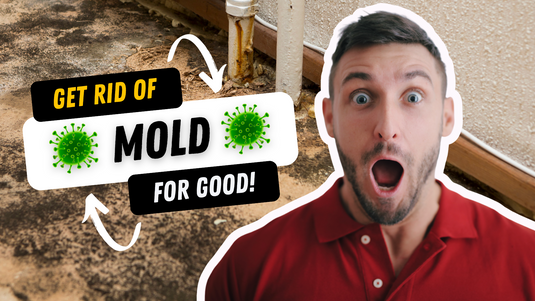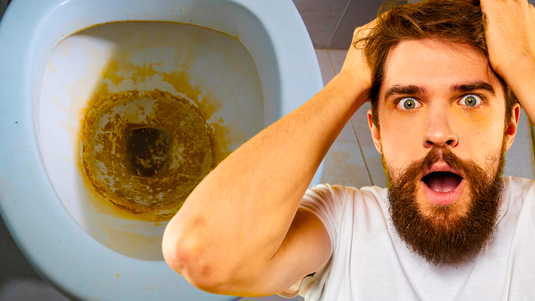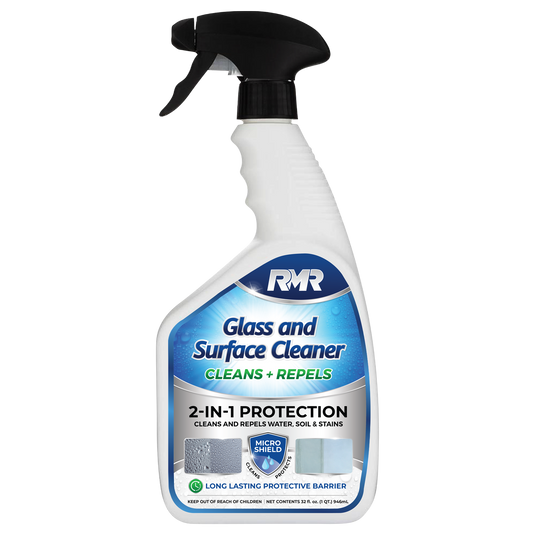Mold is eating your house. It's not just a surface problem, it's not just a source of spores that can damage your health. If your home has mold between the walls, under the floors, or on the support beams then this is no minor infestation. The mold is doing everything it can to break down the materials of your home and turn it back into soil. In other words: the mold is actively eating your home and over time, it can cause serious structural damage.
Mold is More Than a Health Risk
The first advice anyone gets when seeking guidance on a mold problem is to be careful of your health and the health of your family. Mold spores released into the air can cause a wide range of health problems from allergies to brain cancer so this is a very real concern. But what most people don't realize is that mold is also dangerous from a structural standpoint. Maybe not immediately after infestation, but if your home was infested with mold before you moved in or has been growing mold for many years, you might be surprised just how much damage has already been done.
What Mold is Meant to Do
Out in nature, mold isn't just a parasite. It has a purpose: Eating rotting tree trunks. The purpose of mold is to keep the natural ecosystem from getting too piled up with fallen trees. Mold is a fungus and, like most fungi, it's purpose is to bring the circle of life back around from dead plants to live ones. No doubt you've seen all sorts of fungus growing on rotting tree trunks during hiking and camping trips and this is perfectly natural.
Your local mold strains have millions of microscopic spores floating in the air, waiting to settle on any damp dead wood it finds to break it down and develop it back into soil. Unfortunately, mold isn't very smart and it doesn't know the difference between a damp home and a dead tree trunk. When it finds a moist porous surface to land and grow on, that is the beginning and end of the game. From there, it's goal is to spread, overtake the tree, and break it down until there's nothing left. This is actually one of the reasons why tree moist dead trees tend to break apart at a touch: they've already been pretty well eaten.
Your House is That Old Rotting Tree Trunk
Homes are still mostly built out of natural materials or composites of same. Wood, fabric, and drywall are all made of natural materials that, in an unprocessed state, mold would love to eat. Anything that is made from wood like paper or made from other plants like wicker or cloth is within mold's native food source. Especially when they are soaked in water. Mold only cares what this looks like on a microscopic level: porous plant fibers covered in water droplets. The perfect breeding ground for mold.
But, of course, when mold starts to grow it isn't just breeding. It's eating away at the material it grows on. Mold pulls nutrients and moisture from the air and what it grows on in order to make more mold. Over time, mold will effectively coat many of the unseen and humid surfaces in a home, usually between the walls and in attics, and then the real horrifying magic begins to happen. The material begins to disappear behind that wall of mold. Homes that have been infested with mold for over a decade are well-known for beginning to crumble apart, just like an old rotting tree trunk. Some have even seen the roof collapse because the support beams were digested into wood pulp by the mold.
Mold is More Than Spores
When talking about health concerns of mold, the conversation always turns to spores. A tiny number of spores are floating around in the air all the time and they do very little harm. However, a living colony of mold releases millions of spores that together can cause some very serious health problems.
But when talking about mold eating your house, spores aren't the greatest of your worries. Instead, the concern should be with those little tendrils mold uses to spread and to dig deeper into a material. It's the body of the mold that is eating away at your house. Mold loves porous surfaces because it can really dig in. A porous material like wood or fabric soaked in water is the perfect place for mold and once growing, the mold immediately begins to do its job.
The mold tendrils reach into these pores and begin to grow, filling the pores until the mold body is pushing the original material apart. At the same time, it is softening the material by trying to consume all the nutrients within the fibers. This is how it would break down a tree trunk and this is how it is breaking down the walls and support beams of your home.
Is Your Home At Risk of Structural Damage?
One of the most difficult parts of removing mold from a home is how deep it may have spread into the structure. When mold starts to take out support beams and walls, you could be in serious trouble. Whether you accidentally bought a home that already had a bad mold problem or didn't realize your home's been growing mold for years, eventually a mold infestation can go from just a health risk to a major safety hazard.
If you're afraid your home is at risk of structural damage, do not continue to stay inside. Trying to 'wash away' mold that has compromised support beams could put you in even more immediate danger than breathing the thick cloud of spores. Get your family out of the house and call a mold remediation professional right away. They will be able to do a full inspection and let you know just how far the mold has progressed in its attempt to break down your home like an old rotting tree trunk.

